
Chamber of Commerce and Industry of Vojvodina
1919-2019
On February 1, 2019, exactly one century had passed since the current Chamber of Commerce and Industry of Vojvodina, along with its predecessors whose tradition it carries, has been in continuous existence and operation. A century represents a measure of time that reliably judges the durability and value of one’s role and position in the industry it operates in and the environment in which it functions. The completion of one hundred years of existence for the Chamber of Commerce and Industry of Vojvodina is undoubtedly a historical period that vividly demonstrates the significance of this economic institution throughout the tumultuous decades of the previous century, marked by major historical upheavals and rapid social changes.
From the time of the emergence of the first fraternities among the South Slavs, recorded in the Dubrovnik Republic at the beginning of the 13th century, whose influence spread through the establishment of Dubrovnik trading colonies in cities of Serbia and Southern Hungary, to the emergence of trade and craft guilds in almost all major settlements where the Serbian people lived across the Sava and Danube rivers, and the subsequent establishment of the first chambers of commerce, industry, and crafts in these regions, there has always been a desire among members of related professions to unite in order to better protect their interests and achieve their rights and goals.
With the establishment of the first chambers of commerce, industry, and crafts in the Habsburg Monarchy in the mid-19th century, following the trail and tradition of the chamber system established in France in the second half of the 17th century, they became institutionalized as institutions of state economic policy. The first chamber of this kind for the territory of Vojvodina was founded in Timișoara in 1850, and its jurisdiction covered the entire territory of the former Serbian Voivodeship and Tamiš Banat, as separate administrative units of the large empire, from 1849 to 1861. After the abolition of the Serbian Voivodeship (1861) and the Austro-Hungarian Compromise (1867), the territory of present-day Vojvodina was under the jurisdiction of three trade and industry chambers: Szeged for the area of Bačka, Timișoara for the area of Banat, and Osijek for the area of Srem. In several cities in Vojvodina (Novi Sad, Subotica, Sombor, Veliki Bečkerek, Pančevo, Kikinda, etc.), branches of these chambers existed by the end of the 19th century, with local committees at the helm. This chamber system, which brought together traders, industrialists, craftsmen, and farmers, and united their interests while facilitating better connections and a more favorable business environment, remained in effect until the end of World War I and the disintegration of Austria-Hungary in 1918.
-
1891
Management of the Industrial, Craft, and Trade Chamber in Novi Sad in 1891.
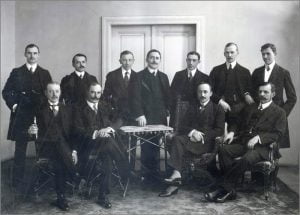
After the annexation of Vojvodina to Serbia at the end of November 1918, followed by the formation of the first joint state of the South Slavs, the Kingdom of Serbs, Croats, and Slovenes, the need for the establishment of trade and industry chambers arose. For the territory of Vojvodina, which traditionally had highly developed areas of trade, crafts, and emerging industries (although, after Slovenia, it was the most developed in the new state), two chambers of commerce were soon established to unite and protect the interests of their members in a similar manner.
-
1919
Minutes from the first constitutive session of the Trade and Craft Chamber in Novi Sad on February 1, 1919.

The direct predecessor of the current Chamber of Commerce and Industry of Vojvodina was the Trade and Craft Chamber in Novi Sad, established on February 1, 1919. Initially, its jurisdiction covered only the area of Bačka, later extending to parts of Srem and, for a period, Baranja. From 1926, when the Association of Industrialists joined, this chamber took on the name Trade, Industry, and Craft Chamber in Novi Sad and operated under that name until the beginning of World War II. The Chamber of Commerce and Industry of Vojvodina also inherits the tradition of the Banat Trade, Industry, and Craft Chamber, headquartered in Veliki Bečkerek (later Petrovgrad, now Zrenjanin), which was founded on January 22, 1920, and was responsible for the Banat region. With the emergence of the Agricultural Chamber of the Danube Banovina (1939), the scope of the chamber system expanded to include agriculture, the most significant economic sector of Vojvodina. Although short-lived, this chamber is the third traditional foundation of the present-day Chamber of Commerce and Industry of Vojvodina.
-
1930
Headquarters of the Chambers of Commerce in Novi Sad and Veliki Bečkerek - Petrovgrad, between the two World Wars.
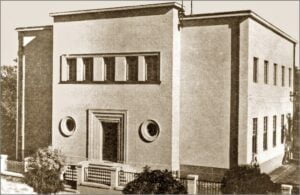
During the interwar period, these chambers faced numerous obstacles and challenges in their operations. However, over time, despite unstable political conditions and constant legal and economic uncertainties, they gradually became more successful in serving their members in a more organized manner. The chambers' primary intention was to influence legislative regulations related to economic issues, facilitate easier economic cooperation with foreign countries for their members, organize or assist in organizing events to showcase the economic potential of their members, support the education and training of new professionals within the economic sectors represented by their members, maintain business registries of their members, resolve disputes, and manage pension funds for their membership, among other tasks. By the end of the 1930s, the chambers had become profitable institutions that, through their activities, enabled more effective support for a broad range of their members.
-
1935
Logo and jurisdiction area of the Trade, Industry, and Craft Chamber in Novi Sad during the 1930s

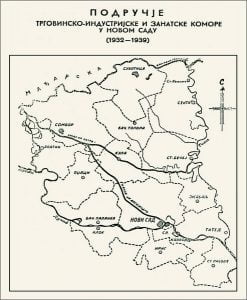
During the occupation period from 1941 to 1944, the activities of the Vojvodina chambers came to a halt. After liberation, for a brief period, they operated on the previous basis, but from 1946 onwards, the existing chamber system was replaced with a new one in line with the prevailing socialist ideology. Between 1946 and 1962, the chambers were organized based on sectoral principles (there were separate craft, hospitality, trade, and agricultural chambers). However, in 1962, with the establishment of the Provincial Chamber of Commerce and Industry, a unified chamber system was established within the territory of the Autonomous Province of Vojvodina.
From that time onwards, the chamber had a greater influence on the economic environment and regulations, but its role was consistently limited by the ideological framework of the ruling system. In 1974, the Provincial Chamber of Commerce and Industry was renamed the Chamber of Commerce and Industry of Vojvodina. During the period of the new constitutional system of the Socialist Federal Republic of Yugoslavia and the emphasized autonomy of Vojvodina (1974-1989), the Chamber of Commerce and Industry of Vojvodina played an increasingly significant role in organizing the entire economic life of the province. The Chamber had a wide range of legal powers and worked on improving production, trade, and services, increasing labor productivity, implementing modern technical and technological procedures, rationalizing work and operations, improving working and business conditions and organization, coordinating construction, reconstruction, and capacity utilization, promoting business and other associations, business-technical cooperation, cooperation and specialization, improving product placement, commodity exchange, and ensuring the unity of the Yugoslav market, among other responsibilities.
-
1990
Building of the Chamber of Commerce and Industry of Vojvodina during the second half of the 20th century.
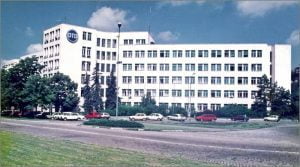
Following the breakup of the Socialist Federal Republic of Yugoslavia, the Chamber of Commerce and Industry of Vojvodina faced significant challenges during the last decade of the 20th century. This period was marked by major trials such as wars, sanctions, economic and political isolation, hyperinflation, the collapse of the common market, a noticeable decline in production and living standards, the rise of the informal economy, and other difficulties. It was a time of unclear social changes and economic conditions, with a lack of legal frameworks defining the position and jurisdiction of the chamber system. In the era of complete centralization in the early 1990s, there were tendencies to merge the Chamber of Commerce and Industry of Vojvodina as an independent institution and incorporate it into a larger chamber system at the level of the Republic of Serbia. However, this did not materialize, and the Chamber of Commerce and Industry of Vojvodina remained a separate entity.
-
2000
Logo of the Chamber of Commerce and Industry of Vojvodina.
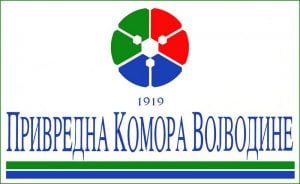
After the democratic changes in Serbia from the autumn of 2000, the chamber system was legally defined, and the conditions for business operations became significantly more regular and stable. As a result, the Chamber of Commerce and Industry of Vojvodina (PKV) was able to operate with a visibly greater momentum and scope than in the previous decade. The importance of the Chamber grew during the privatization and transition of the Serbian and Vojvodina economy, and international cooperation and the reestablishment of business connections with the world and the surrounding countries became one of its primary activities. After a period of years-long isolation, the Chamber made efforts to effectively present the opportunities of the Vojvodina economy to potential partners. The Chamber played a significant role in standardizing the local economy and aligning it with the countries of the European Union, which became the most important business partners for the Vojvodina and Serbian economies in the new century.
-
2010
New headquarters of the Chamber of Commerce and Industry of Vojvodina in the Master Center in Novi Sad.

During the global economic crisis in 2008, the Chamber of Commerce and Industry of Vojvodina also experienced stagnation, which was influenced by new legal provisions regarding the position of the chamber system in Serbia. However, a breakthrough from this state was achieved with the enactment of the new Law on Chambers of Commerce in 2015. This law significantly involved the chamber system in the direct process of making laws, regulations, and decisions related to the economic life of the Republic of Serbia.

The Chamber of Commerce and Industry of Vojvodina has traditionally awarded prizes for the most successful entrepreneurs, highest service quality, and design over the past few decades.
In the year marking its centenary, the Chamber of Commerce and Industry of Vojvodina established the Charter of the Kosta Mirosavljević Award. This annual award highlights individuals and companies who, through their work, exceptional results, socially responsible behavior, and other positive qualities and actions, deserve to be recipients and bearers of this traditional recognition. The award is named after Kosta Mirosavljević, one of the founders and long-time president (1919-1939) of the Trade, Industry, and Craft Chamber in Novi Sad, from which the Chamber of Commerce and Industry of Vojvodina originated.
Since 1992, the Chamber of Commerce and Industry of Vojvodina has consistently presented an award for service quality in the hospitality and tourism sector. The highest recognition, called the "Gateway to Success," is given to the best performers who have achieved a high level of service quality in the following categories: hospitality establishments providing accommodation and dining services, travel agencies, wineries, rural tourism households, and other tourism and hospitality facilities that effectively represent the multicultural community of Vojvodina and significantly contribute to inbound tourism.
These developments required significant changes and a completely new way of working and internal organization, as well as appropriate technical improvements within the Chamber of Commerce and Industry of Vojvodina. These initiatives were launched after personnel changes within the Chamber at the end of 2016 and the beginning of 2017. The new directions of work and development, along with the new internal organization, helped the Chamber define its role in creating and positively developing the business environment. Among the most important tasks, priority was given to activities that were of primary importance to its membership.
The changes in the work and organization of the Chamber of Commerce and Industry of Vojvodina initiated a series of subsequent transformations, establishing an ongoing process with a clear aim to establish a system of continuous changes that would provide a secure perspective for the future development of the Chamber of Commerce of and Industry Vojvodina and the chamber system as a whole.
